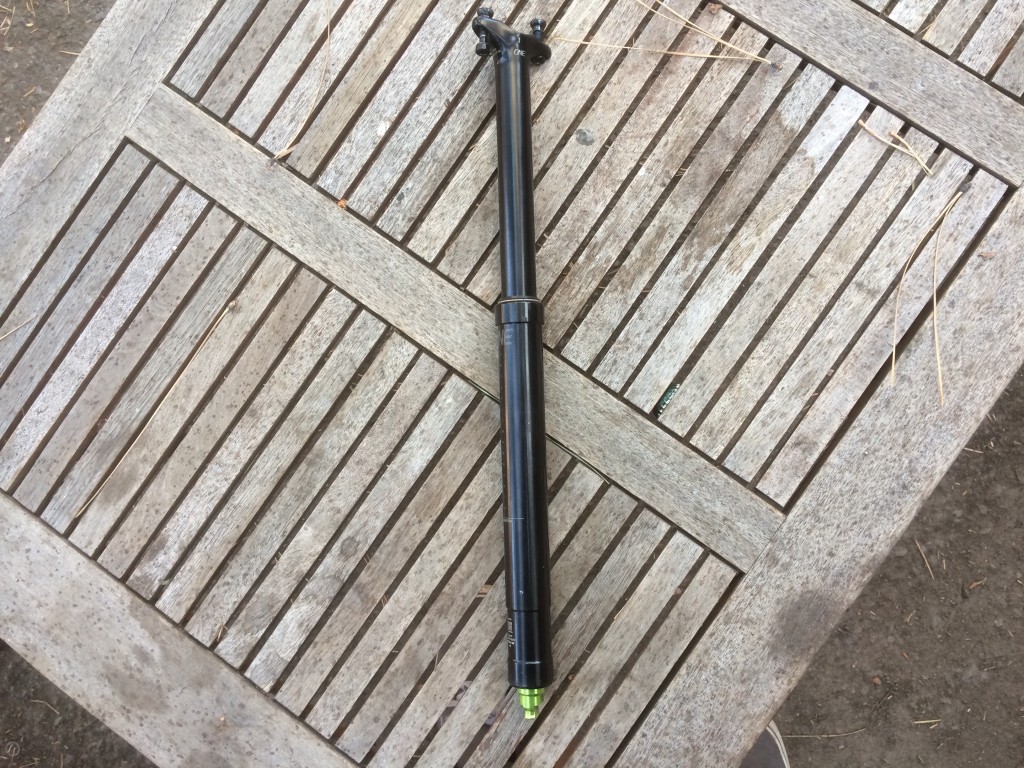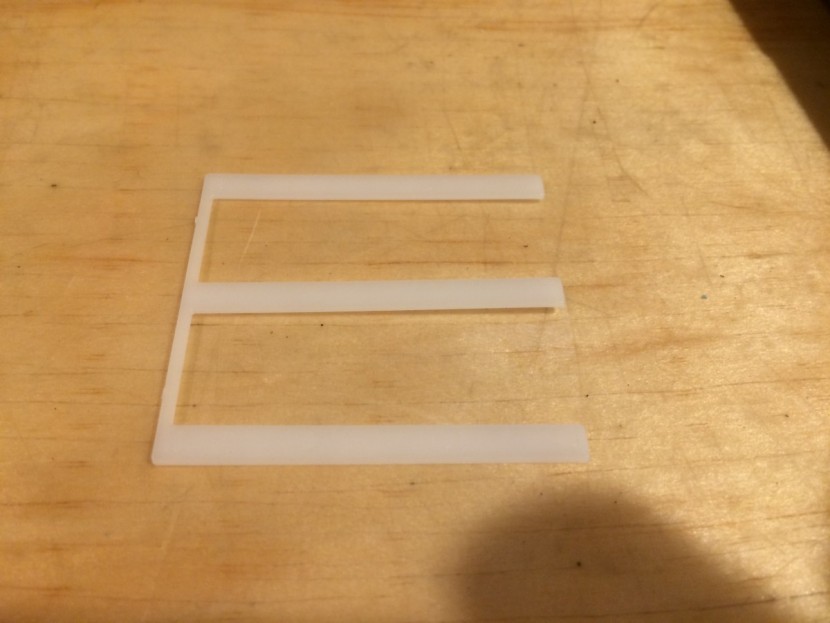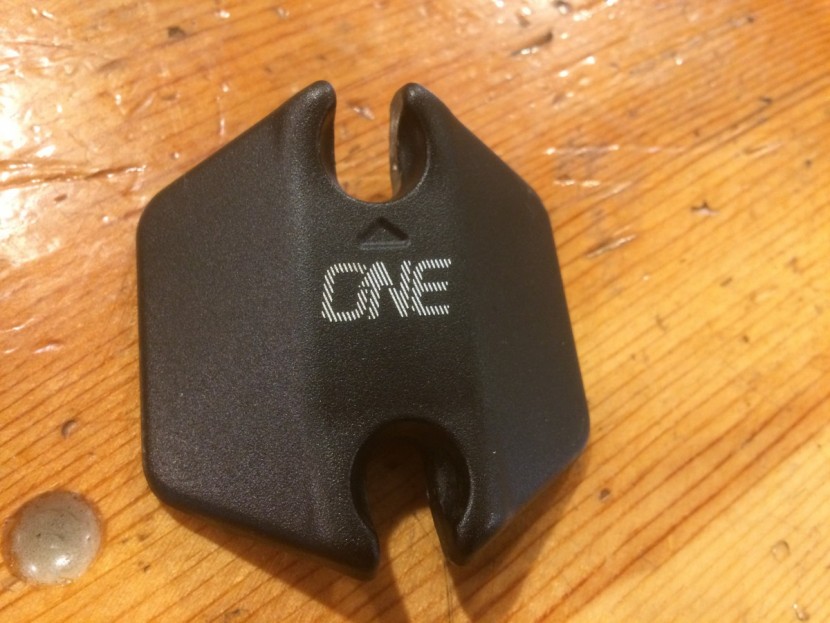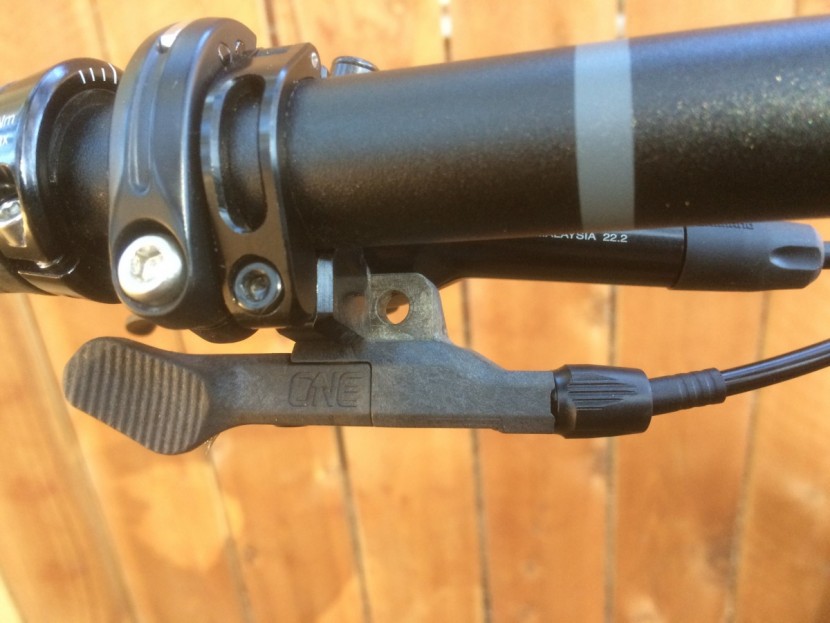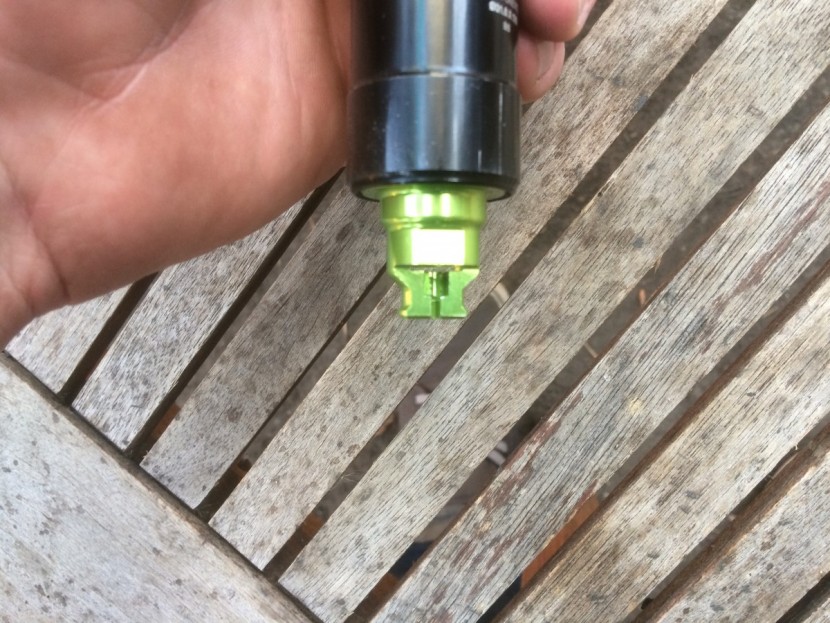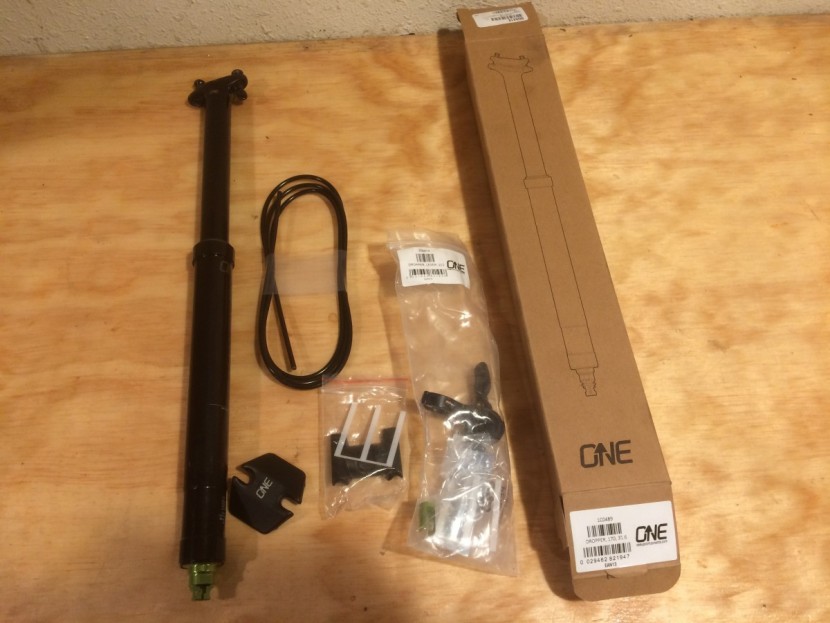OneUp Dropper Review
Our Verdict
Our Analysis and Test Results
OneUp Components is a consumer-direct company out of Squamish, British Columbia. This company has earned a name for themselves by creating clever mountain bike products. This was one of the first brands to deliver an extended range 42-tooth cog for 10-speed drivetrains. They also have a very smart steerer tube tool storage and some very cool micro chainguides. In addition, they make handlebars, pedals, chainrings and much much more.
The V1 Dropper post is a quality dropper that continues this brand's trend of smart approaches to solve common problems. We give OneUp a huge thumbs up for the adjustable travel system and the short-stack height. There are plenty of riders who want to run longer travel dropper posts, but are restricted by the overall lengths of mosts posts. Kudos to OneUp for addressing this challenge. The V2 Dropper works very well but has a few quirks to it. This post was very close to challenging for the Best Buy award, but we feel it falls just a little short in some areas.
Smoothness and Functionality
The OneUp dropper is a functional dropper post. It does its job quite well and doesn't have any fatal flaws. While there are no fatal flaws, it also can't match the performance of our top performers.
Before we get into the actual performance, we want to touch on the adjustability aspect of this post. The moral of the story is that you can shorten the travel of the post by shimming it. You might want to do that if you bought the 170mm travel option but found the overall length of the post is a little too long and need to reduce the travel. The shims are included with the post and come stock at a 50mm travel reduction but can be trimmed to any size. In other words, you can shorten the travel from anywhere from 0-50mm. To do this, you unscrew the collar where the stanchion meets the main post, slide it up and slide the white bushing out of the way. You orient the trimmed shim and slide it into the keyed slots. Reassemble and boom, you're done. We don't want to harp on this feature too much as it is likely that the overwhelming majority of buyers will not use it. Still, it's there should you need it.
Back to the performance aspect. The remote actuates with a minimal amount of thumb strength. No matter how rough or janky the trail surface, it is easy to engage the drop mechanism. The lever works well, no doubt about it. One criticism is the motion of dropping the post feels a little bit more grainy than some of the other posts in our test. We wouldn't describe the drop process as sticky or hitchy, but it didn't feel quite as smooth as others when dropping.
When it is time to climb back up the hill, give the lever a push. Lightly feathering the lever will modulate the rate of return while a full engagement will snap it back up rapidly. The return is solid but we found this post to be fairly sensitive to air pressure and clamp torque. If you are on the low end of the 250-300 PSI air pressure range, the post slows down a little bit at the end of its stroke. When you are closer to 300 PSI, the post comes back quickly and tops out with a nice thud. We recommend staying away from the 250 PSI number due to the slightly inconsistent return speed. Seatpost clamp torque is really important with the OneUp dropper. The torque spec of 8-Nm is printed on the post. At the end of testing, we used a calibrated torque wrench to slightly over-tighten the post clamp to 10Nm and found it started to restrict the system. As with all dropper posts, it is best to tighten the post clamp just enough so it doesn't slip.
Saddle Clamp
The OneUp has a very smart saddle clamp. We will avoid going into a full-blown rant, but this is a piece of a seatpost that is notoriously difficult to work with. Those who have sausage fingers and clunky hands traditionally have a difficult time feeding a bolt and nut into a very tight space. The OneUp post uses an upper clamp that has cutouts that allow you to install the bolts and nut through the holes in the post and then slide the upper clamp into position. We love it. Is this is a small detail? Yes. Is it hugely appreciated? Yes.
Once installed, you will likely never need to remove the saddle clamp again. The only reason to undo the saddle clamp would be to add or remove air from the system.
Remote
The OneUp Dropper remote is functional and exceptionally light. The plastic composite construction definitely contributes to the low weight, although we prefer the more robust feel of metal levers and have a little more confidence in them in the event of a crash. The OneUp remote doesn't feel flexy or cheap, but we have an unsubstantiated suspicion that it may be quick to fail if it got dumped onto the ground.
The paddle where your thumb contacts the lever is a little small. We didn't have any trouble using the lever, but a larger contact patch could be helpful. A rubberized and ribbed contact point is relatively grippy. There are two mounting holes that connect the lever to the bar clamp giving you two options as to where to place the remote. You can move the whole remote inboard or outboard by approximately 10mm by using a different mounting hole. We found the lever action to be functional and fine, though there are smoother levers in this test.
Weight
The OneUp post weighs 636-grams with the remote and cable/housing. That puts it at the lighter end of the spectrum among posts in our test. The lightest options are still approximately 60-grams lighter than the OneUp. That said, the price to weight ratio with this post is quite high.
Ease of Setup
The OneUp Dropper has about an average set up difficulty. Most of the process is very similar to any other cable-actuated post with a small twist. The only difference is the installation of a green bracket over the actuator and securing it with a black O-ring. This locks the actuator in place. This process isn't difficult, but if you have installed multiple cable-actuated posts, this is a little bit of a curveball.
Running the cable from the post through the housing and out the head tube is business as usual. Installing the remote is simple and painless and there is nothing special going on. It may take a couple of attempts to dial in the cable tension at the remote. That said, that is a low-stakes issue to address and only involves loosening the cable clamp and adjusting the tension.
Value
At $218, the OneUp post delivers an impressive value. This price includes the post, $169, and the remote lever which costs an additional $49. We think there are posts that work a little bit better, although most of these posts cost a fair amount more. If you are on a budget, the V1 Dropper is a great choice that works well.
The PNW Bachelor dropper is our Best Buy winner. We feel this post simply works a little bit better, has a better remote, and is easier to work with compared to the OneUp. The Bachelor sells for $300.
Conclusion
The OneUp V1 Dropper seatpost is a rock-solid post at a very impressive price point. Mountain bike nerds will love the adjustable travel feature although we anticipate that most people will never use it. The short stack height is very attractive for shorter riders who want to go with a longer-travel dropper but have had fit issues in the past.
In terms of actual, on-trail performance, we found this post to be decent. It does its job pretty well, although it is not without its quirks. This post is a little sensitive in terms of air pressure, the drop action is a little stickier than other posts, and the remote has a bit of a flimsy feel. That said, at $218, you are getting an affordable and clever seatpost that will get you out on the trail and maximizing your shred.
Other Versions and Accessories
The OneUp V1 Dropper comes in a variety of flavors. First, it is available in the two most popular post diameters, 30.9 and 31.6 (tested). Additionally, the travel options are 150mm and 170mm. As we mentioned, travel can be shortened to make the longest possible post work with your bike and body.
They also make the V2 Dropper which is available in 30.9 and 31.6mm diameters and 120, 150, 180, and 210mm drop lengths. The 120 and 150mm lengths are sold for $199 for the post only, and the 180 and 210mm version go for $209. Remote levers are sold separately for $49.
There are four different options for remote mounts depending on your brake setup. There is A SRAM Matchmaker option, two Shimano I-Spec choices, and a straight-up handlebar mount.


